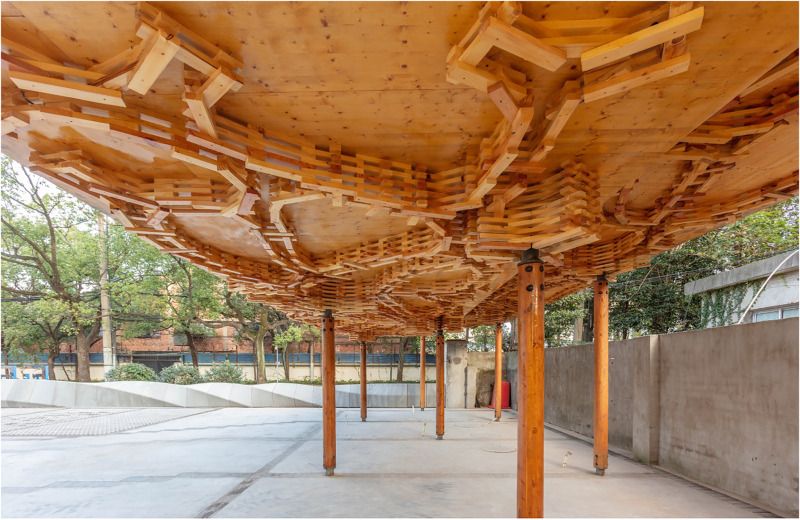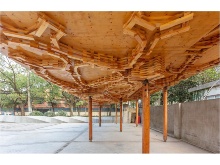A new paper on “Computational design and on-site mobile robotic construction of an adaptive reinforcement beam network for cross-laminated timber slab panels” has been published in Automation in Construction.
Highlights
- A mobile robot platform for on-site timber construction was introduced.
- A timber slab system with on-site robot-fabricated beam network was developed.
- The design and construction workflow were evaluated with a case-study pavilion.
- The timber slab system offered the flexibility to adapt to different floorplans.
- Filling the gap in the empirical research of on-site robotic timber construction
 Figure 1: Case study pavilion with adaptive reinforcement beam network in timber slabs.
Figure 1: Case study pavilion with adaptive reinforcement beam network in timber slabs.
Abstract
Timber slabs design is currently limited to grid layouts derived from prefabricated rectangular panels. The lack of adaptability of timber slabs to accomodate multiple span directions makes it difficult to compete with reinforced concrete slabs constructed on site. This paper describes an adaptive slab system composed of thin Cross-Laminated Timber (CLT) panels and robot-fabricated beam networks for reinforcement. The beam network was developed through intricate negotiation of structural optimization and fabrication constraints, which can adapt to changes in slab span and directions. A mobile robot platform that allows for on-site assembly of timber sticks into continuous beam networks was developed. The robot platform and slab system were tested with a case study pavilion. The co-design of the robot platform and the slab system fills the gap in on-site robotic timber construction and expands the design freedom of timber buildings.


